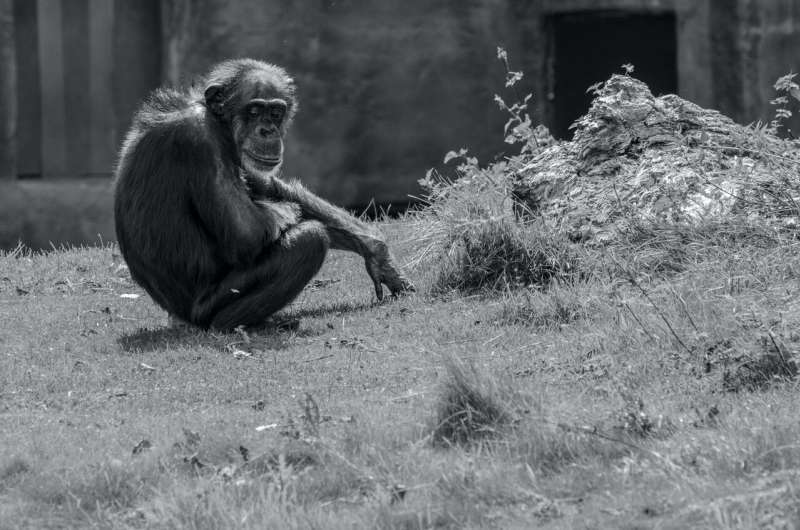Chimpanzee sitting alone. Members of the species are known to distance themselves from sick individuals. Credit: Dominik Scythe on Unsplash
The notion of social distancing rose to public prominence approximately a year ago, when health officials began recommending it as a way to slow the spread of the novel SARS-CoV-2 virus. Despite the novelty of the concept among many contemporary human audiences, social distancing has considerable precedent among animals. Writing in BioScience, Mark Butler of Florida International University and Donald C. Behringer of the University of Florida outline the role of social distancing in nature and compare it with its human counterpart. They describe numerous animals in which distancing has evolved, including guppies, chimpanzees, birds, ants, and mice, among many others.
Often, say the authors, social distancing can mark substantial behavioral changes in otherwise highly social species. Butler and Behringer describe the seasonal migrations of spiny lobsters, which occur "en masse, strung out on the seafloor in dramatic single-file lines or queues." However, because juveniles are particularly susceptible to a virus known as PaV1, which can kill 90% of those infected, healthy lobsters detect and refuse to shelter alongside their diseased conspecifics.
Similarly, say the authors, chimpanzees are known to ostracize unwell group members, such as those infected with polio, and are also thought to benefit from a general avoidance of individuals outside their immediate group. Further examples abound, including among highly social house finches, which avoid experimentally sickened members of the same species, and three-spined stickleback fish, which avoid schools that contain ectoparasite-infected individuals. Some animals even deploy other strategies that resemble humans' disease precautions, such as ants that "use poisons to disinfect their colonies and prevent epizootics."
According to the authors, a key to animals' successful deployment of social distancing lies in their ability to effectively use cues—often olfactory—to detect sickened individuals. Indeed, animals are often able to "use social distancing effectively and efficiently." In contrast, humans are typically forced to rely on low-accuracy visual or auditory cues, such as feverish appearance or coughing, highlighting the importance of diagnostic testing for the effective reduction of disease transmission.
Butler and Behringer suggest that future study may further illuminate and inform human responses to disease: "The examples of social distancing in wild animals in the present article, although they are compelling, are likely a small fraction of those that actually exist in nature and reflect the limited investigations conducted thus far on this phenomenon in the wild. What lessons might we learn about the human experience with pandemics from an expanded view of diseases, their spread, and their prevention in nature?"
More information: Mark J Butler et al. Behavioral Immunity and Social Distancing in the Wild: The Same as in Humans?, BioScience (2021). DOI: 10.1093/biosci/biaa176 , academic.oup.com/bioscience/ad … osci/biaa176/6122880
Journal information: BioScience
Provided by American Institute of Biological Sciences























